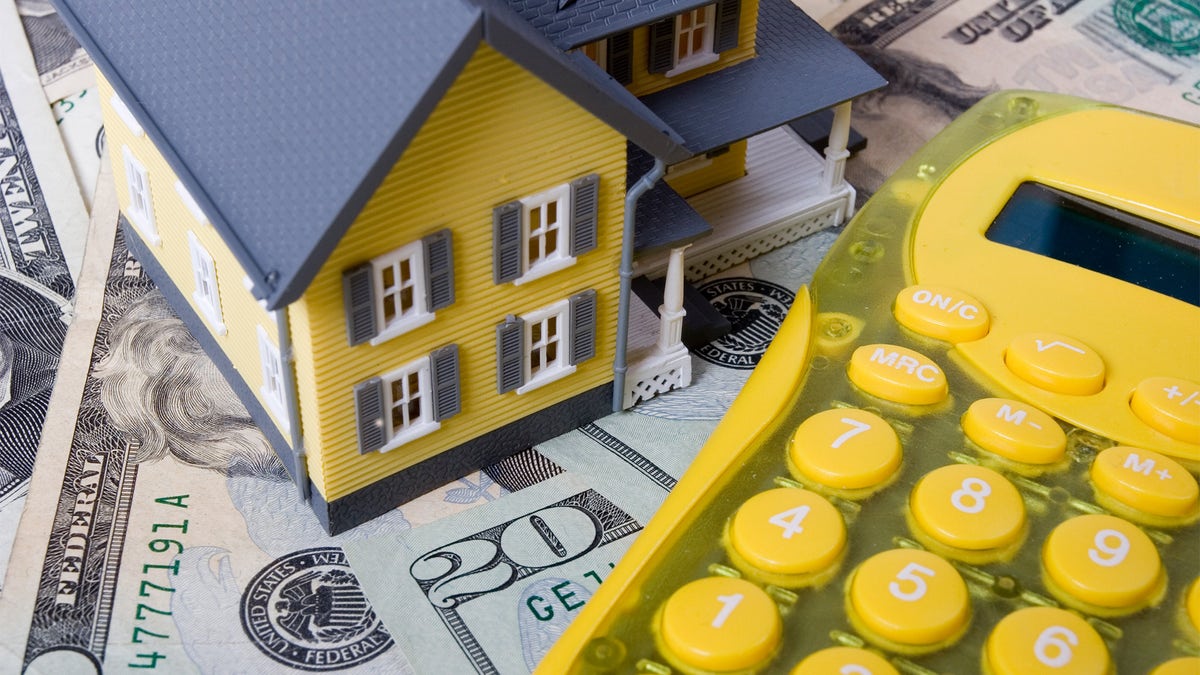
mortgage-20
You don't really have to put 20% down on a house (and with home prices so high these days, who can afford that?), but if you don't, you have to pay for private mortgage insurance, which can be a costly add-on to your monthly bill. So one way or another, you'll pay.
But there's a kind of loan you can use to avoid PMI -- and save money at the same time. You may not have even heard of it! It's the 80-10-10 mortgage, commonly referred to as a kind of piggyback mortgage.
It is, in fact, two loans that cover most of your mortgage while you only put 10% down. The first mortgage covers 80% of the home's value, 10% is what you put down, and the second loan is for 10%. The second loan (the piggyback) is taken out as a home equity line of credit (HELOC) that closes at the same time as your 80% mortgage.
So, you effectively have a mortgage with only 10% equity, but you don't pay PMI (versus getting a loan for 90% of the home's value with a 10% down payment and paying PMI).
Often, that's the point of a piggyback mortgage -- to avoid PMI when you don't have enough to put 20% down. But it's not the only reason; some people use piggybacks to pay for a home a conventional mortgage wouldn't cover, essentially avoiding jumbo loans.
But first, let's talk about PMI.
The PMI debate
Before the market crash, piggyback mortgages were very common. That's mostly because PMI was more expensive than it is now, potentially running to several thousand dollars a year.
"In the past, PMI was a dirty word," explains Jeremy Schachter, a mortgage adviser and branch manager with Pinnacle Capital Mortgage in Phoenix, AZ. Now? Not so much.
PMI rates vary just like mortgage rates, with higher rates for low credit scores and tight debt-to-income ratios. Generally, you can expect to pay $30 to $70 per month for every $100,000 borrowed, according to Freddie Mac. (Keep in mind that's just an average -- you could end up paying more, depending on your personal situation.)
So if you'd still rather avoid that PMI, the piggyback mortgage could be a good option for you.
What's that piggy gonna cost me?
The upfront costs of the piggyback mortgage itself -- the HELOC -- are also pretty cheap.
"HELOC closing costs are usually inexpensive, because it's a revolving line of credit," says Cary Carbonaro, a certified financial planner and author. The real cost is weighed in both the money paid on interest and in the risk of having a second loan secured by your home.
But eligibility requirements for a piggyback are tight. Generally they're for "someone who has amazing credit, or a ton of assets, or both. I don't see an average person getting this," Carbonaro says.
Schachter agrees. "Second mortgages are in second lien position, meaning they get paid after the first mortgage. Second mortgages have stricter guidelines on credit, your debt-to-income ratio, and past credit issues like foreclosure, bankruptcy, and short sales," he says.
In fact, a credit score of at least 700 is required -- higher scores are commonplace.
Plus, HELOCs actually come with higher interest rates than primary mortgages. In addition, they're usually adjustable-rate mortgages, which fluctuate according to market rates, although some lenders offer hybrid or fixed-rate options. If you get an ARM, don't forget that the Fed is expected to gradually raise rates over the next several years.
"The payment will go up on all [ARM] HELOCs," says Rick Olson, a mortgage adviser with Commerce Home Mortgage in San Ramon, CA.
So while you won't be wasting money on PMI, you'll be paying off your HELOC interest -- which could easily be more than PMI payments.
So why would anyone with stupendous credit and/or great assets want an 80-10-10?
Why some might want to use a piggyback loan
It turns out, piggybacks aren't just used to avoid PMI. They can be used to leverage a conventional loan into a mortgage a nonconforming jumbo loan would normally require. So if you want a home that's more than your county's conforming loan limit -- usually $417,000 -- you can "piggyback" some cash by taking out a HELOC. That money, combined with your down payment, can net you a house significantly more expensive than the conforming loan limit, while using a conventional loan and putting only 10% down.
It makes sense because jumbo loans have higher interest rates, so you're essentially "getting a better rate on the first mortgage," Schachter says.
Otherwise, piggyback mortgages might not be worth it, both Schachter and Olson agree. The cost of PMI is so cheap these days, you could be spending more on your piggyback loan.
In fact, Schachter says he has "not seen a big comeback [for piggybacks] since the first financial crisis." Olson says he hasn't worked with an 80-10-10 in "at least a year" and that piggybacks saw a slight resurgence "for a bit [after the financial crisis] but not anymore" since PMI rates are so low.
"I would compare doing one loan with mortgage insurance and then compare with a piggyback," Schachter says. "Many times I see it makes more sense to do the one mortgage."
-- -- -- -- --
Video: What Your Mortgage Broker Wishes You Knew